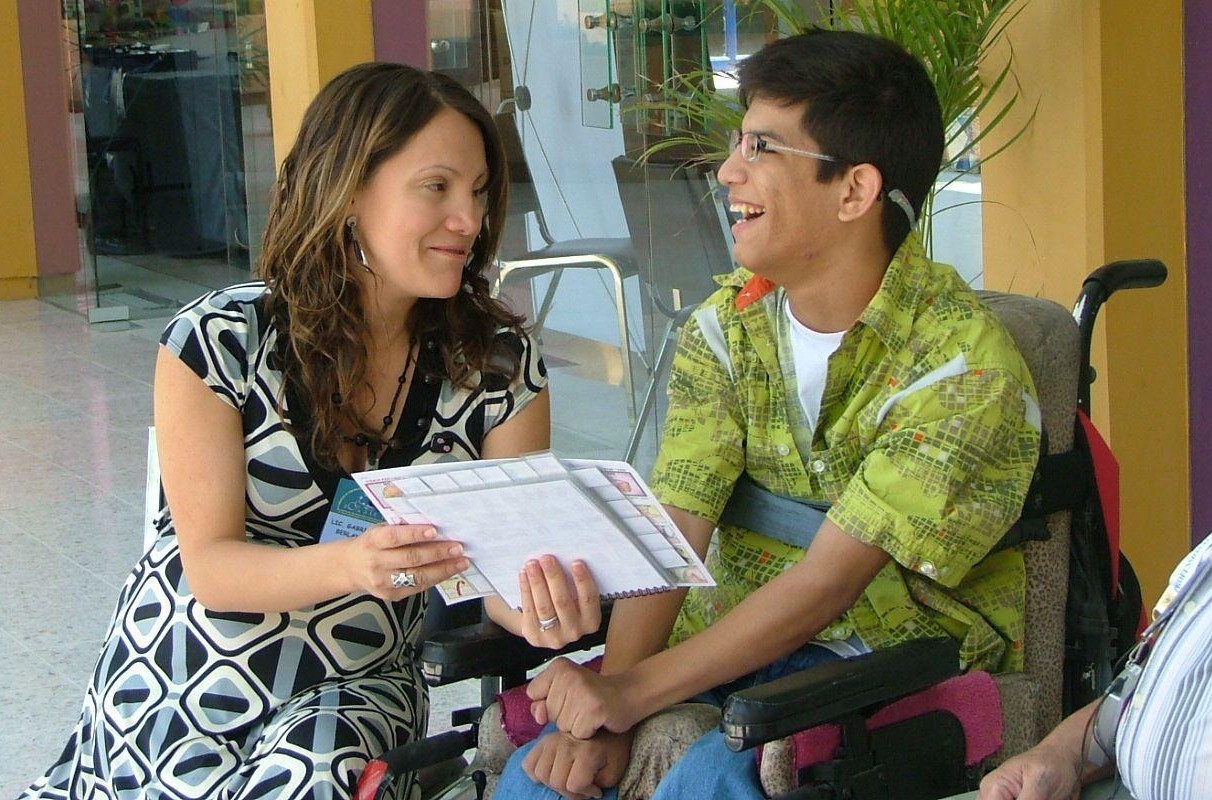Enhancing Inclusion and Empowerment: Visual Supports and AAC in Digital In-Class Education
By Ivana Vasilevska Petrovska
In the realm of inclusive education, harnessing the power of Visual Supports and Augmentative and Alternative Communication (AAC) is crucial for providing equitable access to education and promoting the rights of persons with disabilities. The integration of visual support and AAC strategies within the digital in-class environment creates opportunities for effective communication, personalized learning, and improved outcomes for learners. In this article, we will explore the connection between visual support and AAC, highlight their distinct features, and discuss the implications for teaching and learning practice, while emphasizing the importance of these approaches in upholding human rights and the rights of persons with disabilities.

Understanding the Connection
Visual Supports encompass a wide range of tools and techniques that utilize visual cues, aids, and structures to enhance comprehension, organization, and reduce anxiety for learners. These may include visual schedules, graphic organizers, social stories, and visual prompts. On the other hand, AAC encompasses strategies and tools that support or replace traditional spoken language for individuals with complex communication needs. This can involve the use of communication boards, picture symbols, sign language, speech-generating devices, and AAC apps. While visual supports primarily focus on facilitating understanding and reducing barriers to information, AAC aims to empower individuals to express themselves, engage in meaningful interactions, and actively participate in the learning process. While Visual Support primarily relies on visual elements, AAC encompasses various modalities to support communication.
Implications for Teaching and Learning Practice
- Enhancing Communication Accessibility: Visual Support and AAC enable learners to access and comprehend information more effectively, irrespective of their communication abilities. By incorporating visual elements and AAC methods into digital materials and platforms, educators can ensure that all learners can engage with content and participate in classroom activities.
- Supporting Individualized Instruction: The combined use of Visual Support and AAC allows for personalized instruction tailored to each learner's unique communication needs. Educators can create customized visual schedules, communication boards, and AAC systems, providing learners with the tools to succeed and participate meaningfully in the learning process.
- Facilitating Understanding: Visual supports aid learners in comprehending expectations, routines, and concepts by providing visual cues and structure. AAC strategies empower learners to express their thoughts, ideas, and emotions, enabling a deeper understanding and engagement with the learning materials.
- Promoting Independence and Self-Advocacy: Visual supports and AAC tools empower learners to become active participants in their educational journey. By providing voice and control over their communication, learners gain confidence, autonomy, and the ability to advocate for their own needs, preferences, and rights.
- Promoting Engagement and Empowerment: Visual Support and AAC provide learners with a voice and control over their own communication, fostering active participation and empowering individuals with autism and intellectual disabilities. These tools enable learners to express their thoughts, preferences, and opinions, promoting self-advocacy and autonomy.
- Encouraging Inclusive Collaboration: Visual Support and AAC facilitate collaboration among learners with diverse communication abilities. By implementing these tools in group activities and projects, educators create an inclusive environment where all learners can contribute, exchange ideas, and collaborate effectively.
- Cultivating Multimodal Learning: Integrating Visual Support and AAC embraces a multimodal approach to learning, catering to diverse learning styles and preferences. This facilitates deeper comprehension, engagement, and knowledge retention among learners.
Digital Tools: Implementing Rights and Equal Opportunities

Utilizing digital tools in the classroom further strengthens the implementation of human rights and the rights of persons with disabilities in education. The United Nations Convention on the Rights of Persons with Disabilities emphasizes equal access to education and communication as fundamental rights. Digital platforms, educational apps, and assistive technologies provide learners with disabilities accessible and inclusive means of communication and learning, enabling them to fully participate and thrive in the educational setting.
Visual Support and AAC are powerful tools that significantly impact teaching and learning practices in the digital in-class environment. By integrating these approaches within the digital in-class education setting, educators empower learners with autism and intellectual disabilities to express themselves, engage in meaningful interactions, actively participate in their education and uphold the principles of human rights and equal access to education. Embracing digital tools further enhances the implementation of these rights, allowing for greater inclusivity and providing learners with the means to fully engage in their educational journey. The transformative potential of Visual Supports and AAC in digital in-class education can create inclusive and empowering learning environments that celebrate the diverse strengths and voices of all learners.
